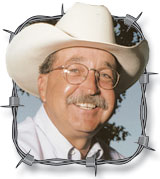When I woke up on New Year’s Eve Day, 2010 – the TV screen was striped with a red-yellow radar streak and Tulsa Weather was broadcasting tornadoes on the ground in Eastern Oklahoma and Western Arkansas. The first reports came in about 6:30 a.m. and said that victims were trapped in fallen buildings and there were many more problems around Cincinnati, Ark.
My first concern was my daughter and son-in-law who live close by. My grandson is starting to build a new house on their place. I called them and found they were fine – no power, but a generator. My granddaughter, her husband and two more great-grandkids were also alright.
Then I got some calls, where was Cincinnati, Ark.? And I began to search my mind for facts I knew about the historic place on Highway 59, south of Siloam Springs, Ark. There was a Federal Military Road that stretched from Minnesota to Louisiana – that is now Ark 59. It was on the boundary line that went from fort to fort – starting at the north in Minnesota then to Fort Leavenworth, (Kansas City) and came through Fort Scott. In those days back in the 1830s, communication and supplies were sent up and down this road. Supplies were brought up the Arkansas River in shallow running paddle wheel boats to Fort Smith and were freighted north on this road.
If you’d arrived in Western Arkansas in this period, you’d find it to be a very commercial place. Reported by historians these crossroads were founded first as a small store on that military road. On the side of that crate was the printing, with something about Cincinnati. Nearby folks got to saying, “Let’s go down to Cincinnati and play some cards.” That’s how the town got its name.
There were dry good stores beside hardware and mercantile, millinery shops and the town boasted several physicians, barbers, blacksmiths and harness and saddle businesses.
Another thing that added to Cincinnati’s business was the fact it was only a short distance to the Indian Territory line – which was dry. Maybe a half mile from the line you could get a shot of booze or a mug of beer. Congress did not believe Indians should drink spirited beverages and the federal law was enforced until I was in high school in Arizona. That did not keep red men from drinking, it simply made bootleggers richer. Those that sold illegal booze kept Oklahoma dry for years.
On the last day of 2010, a severe thunderstorm struck that community. One man died milking his cows. Three people in all were killed when the storm came churning up Highway 59, a fifth of a mile wide with one-hundred-fifty-mile-per-hour winds. Their volunteer fire station was destroyed with the vehicles inside – this was a severe loss because many of us helped them fund that operation. I will try to have the addresses of sincere causes you can donate to help them.
God bless all of you and have a wonderful 2011.
Western novelist Dusty Richards and his wife Pat live on Beaver Lake in northwest Arkansas. For more information about his books you can email Dusty by visiting www.ozarksfn.com and clicking on ‘Contact Us’ or call 1-866-532-1960.







